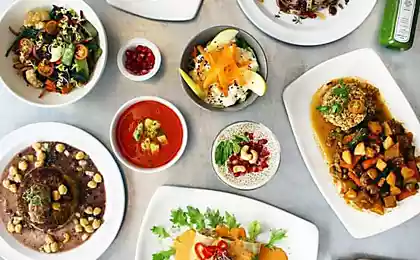2077
Outrageous dishes
Food tourism in recent years is gaining popularity. With each passing day the world becomes smaller and the food tastes and preferences are becoming more pretentious and expansive. These gourmet enthusiasts do not miss a single opportunity to taste strange, unusual, exotic dishes in the most remote corners of the earth. Many travelers believe that the best way to learn a new culture - is to try the food, which is prepared by the locals. Probably not everyone would venture to try at least one of the products presented in this review. Perhaps many people have the idea that other people are able to have these dishes will cause an attack of indignation, anger, rage, or genuine surprise.
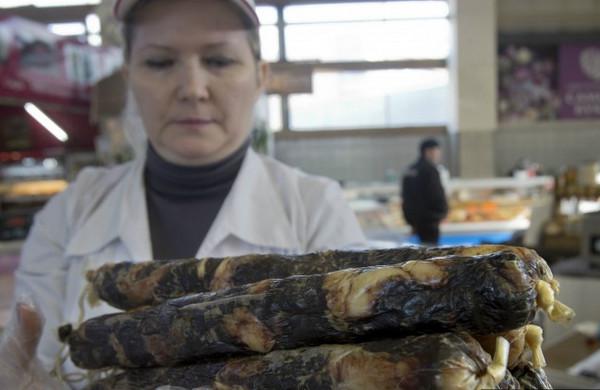
Many national cuisine uses products that are capable of much surprise and even anger of people who are not accustomed to them. This may be an animal meat, which is considered one culture pet, and in the other - an ordinary meal. It may be barbaric and savage methods used in the preparation of various delicacies. The bottom line is that there are some foods that people find offensive and immoral. To try these "unusual" delicacies, of course, it is best to visit the countries in which they are used, but very often just enough to walk to restaurants.
10. Porpoise

For many children, these cute fluffy creatures are beloved pets. Parents often give preference to guinea pigs because of their unpretentiousness and ease of courtship. However, in South America is a different story. Guinea pig meat or Cuy (as it is called in South America) was used for a long time yet indigenous peoples of the Andes, and in 1960 it became a daily meal in countries such as Peru, Bolivia, Colombia and Ecuador. According to statistics, every year the Peruvians consume 65 million guinea pigs! This dish is also eaten in the territory of South-Saharan Africa. However, in North America and Europe alone kind of fried guinea pig leads most people into shock. Here is taboo!
9. Calf
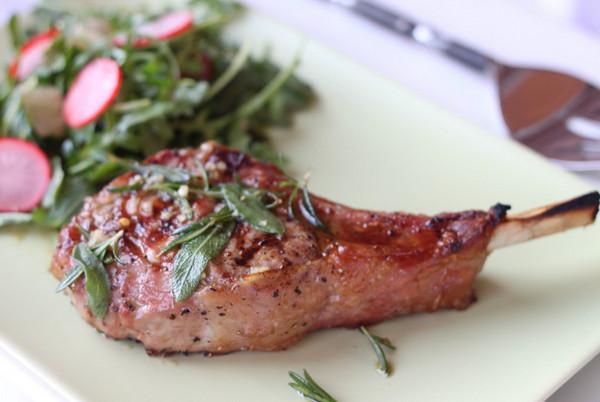
Murder of a child can really disturb the cows and offend some people. In principle, the lamb is not much different, however, is precisely why the use of veal, for many people it seems inhumane. For centuries it has been a staple of Italian and French cuisine. Pets are appreciated for liver, kidney, bone marrow and tender sweetbreads. In the 1980s, the American public learned that the calves are locked in boxes and cable, preventing them from free-range. Since then, demand for veal has fallen sharply, but the increased interest in this problem. In 1990 in the UK growing calves in crates was illegal, and the American Association stated that by 2017 will gradually reduce their use.
8. Horse
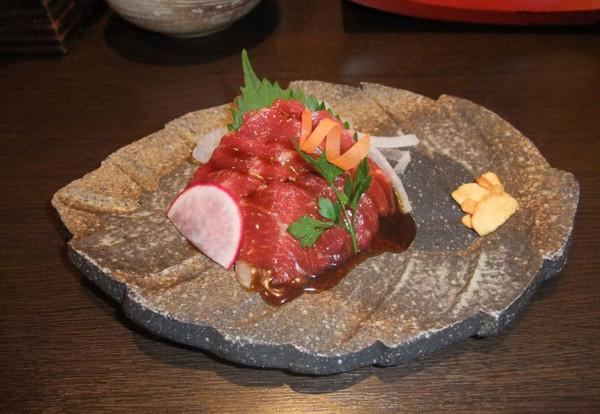
Horse meat is often used in many European countries and in Japan. However, in many English-speaking countries, such as UK, USA, Canada, Australia, the consumption of this delicacy is seen as taboo. Smoked horse meat is popular in Belgium and the Netherlands, and in Germany the meat used in Sauerbraten (marinated meat stew). Sausage from horse meat - a popular product in Scandinavia. In Japan, the horse meat is served raw, particularly popular dish in the south of the main island of Kyushu country. Ironically, most of the horse comes to Japan from western Canada, where consumption of horse meat is considered strictly taboo. Only Quebec is more tolerant.
7. Foie gras

As is the case with beef, about farming practices of birds raised for foie gras, there were many disturbances. Foie gras - liver is well-fed geese or ducks. However, this feeding is usually violent, using a special funnel. In France, a dish of goose or duck liver can not be called foie gras, if the bird was not well-fed so cruelly. However, in other countries of birds fed a more natural way, and the well-known name of "award" to all dishes from poultry liver. Natural feeding birds is considered more ethical and humane, but the taste they are not much different.
6. Keith

Organization PETA and Greenpeace regularly protest against whaling ships, because in most countries the practice is considered immoral to kill whales. Outrage and anxiety activists mainly due to the fact that today animals are threatened with extinction as a species, so their use as food is simply impossible. Despite this, today many people are still engaged in fierce fishing. For countries such as Norway and Japan, whaling - a historical tradition that is still relevant. Their meat - a source of energy for the indigenous people of Greenland and Alaska. The Japanese consume whale meat in dishes such as sashimi, karaage. It is available in supermarkets and many restaurants.
5. Dolphin
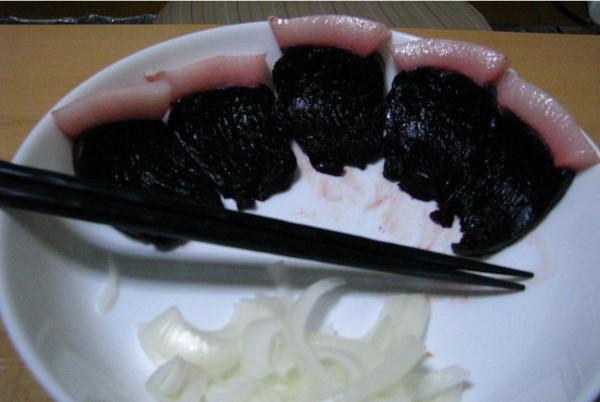
Dolphin meat is also used in Japan, but in contrast to the whale meat is a very rare delicacy that is eaten in a small Japanese town of Taiji, in the south of the island of Honshu. Most Japanese have never even tried it, because the hunting of animals is prohibited. However, they often swim in the bay, where poachers block them, and then killed. Activists regularly organize protests and oppose the murder of dolphins.
4. Cat
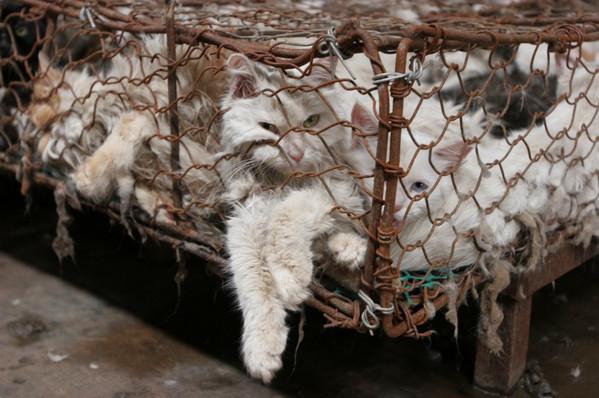
Meat cats rarely used, in contrast to the meat of dogs, especially in some areas of southern China and Peru. This is a local delicacy in the Chinese provinces of Guangdong and Guangxi. Restaurant «Fangji Cat Meatball» in the Chinese city of Shenzhen was closed after a huge protest in 2006. In 2010, the Chinese government passed a law according to which people who use meat dogs and cats, can be imprisoned for up to 15 days. Small groups of people also regale delicacy in the Peruvian provinces of Chincha Alta and Huari, but it is not widely purchased.
3. Dog

In South Korea, dog meat is consumed year-round, but it is especially popular in the summer months, as part of stews and soups. National dish is bosintang (spicy stew boiled dog meat with vegetables) and Gaegogi Muchim (dog meat, steamed). This region has been deduced special breed Nureongi bred exclusively for meat. For most, this practice is simply insulting, because dogs are considered household and service animals.
2. Shark

Outrage over the use of shark meat frequent. However, the greatest fury in particular is shark fin soup, a delicacy very popular in China and Taiwan. Is a particularly cruel method of extraction fins. Sharks are caught, cut off the fins and then still alive thrown into the water where the animals simply suffocate or eat other predators. In 2011, Gordon Ramsay made a documentary specifically for Channel 4 called "Shark Bait", which depicted the cruelty and inhumanity for shark finning. After tasting the soup Ramzi said that the fin was soft and tasteless.
1. Man

Of course, cannibalism - very disturbing and serious subject. However, the public knows many recent cases of human eating meat. And we are not talking about the bloody serial killers or African tribes. In 2012, the Japanese asexual named Mao Sugiyama voluntarily agreed to have his genitals cut off, and 22 guest paid almost $ 1,000 for the "privilege" to eat his dignity, decorated with parsley and mushrooms. In 2011, Canadian comedian Kenny Hotz tried to legally become a man-eater during the TV show "Triumph of the Will." Hotz ate nails and milk teeth of his friends, and drank blood donations. He even ate the human placenta and umbilical cord, donated one of his fans, who then prepared Chef Matty Matheson.

Many national cuisine uses products that are capable of much surprise and even anger of people who are not accustomed to them. This may be an animal meat, which is considered one culture pet, and in the other - an ordinary meal. It may be barbaric and savage methods used in the preparation of various delicacies. The bottom line is that there are some foods that people find offensive and immoral. To try these "unusual" delicacies, of course, it is best to visit the countries in which they are used, but very often just enough to walk to restaurants.
10. Porpoise

For many children, these cute fluffy creatures are beloved pets. Parents often give preference to guinea pigs because of their unpretentiousness and ease of courtship. However, in South America is a different story. Guinea pig meat or Cuy (as it is called in South America) was used for a long time yet indigenous peoples of the Andes, and in 1960 it became a daily meal in countries such as Peru, Bolivia, Colombia and Ecuador. According to statistics, every year the Peruvians consume 65 million guinea pigs! This dish is also eaten in the territory of South-Saharan Africa. However, in North America and Europe alone kind of fried guinea pig leads most people into shock. Here is taboo!
9. Calf

Murder of a child can really disturb the cows and offend some people. In principle, the lamb is not much different, however, is precisely why the use of veal, for many people it seems inhumane. For centuries it has been a staple of Italian and French cuisine. Pets are appreciated for liver, kidney, bone marrow and tender sweetbreads. In the 1980s, the American public learned that the calves are locked in boxes and cable, preventing them from free-range. Since then, demand for veal has fallen sharply, but the increased interest in this problem. In 1990 in the UK growing calves in crates was illegal, and the American Association stated that by 2017 will gradually reduce their use.
8. Horse

Horse meat is often used in many European countries and in Japan. However, in many English-speaking countries, such as UK, USA, Canada, Australia, the consumption of this delicacy is seen as taboo. Smoked horse meat is popular in Belgium and the Netherlands, and in Germany the meat used in Sauerbraten (marinated meat stew). Sausage from horse meat - a popular product in Scandinavia. In Japan, the horse meat is served raw, particularly popular dish in the south of the main island of Kyushu country. Ironically, most of the horse comes to Japan from western Canada, where consumption of horse meat is considered strictly taboo. Only Quebec is more tolerant.
7. Foie gras

As is the case with beef, about farming practices of birds raised for foie gras, there were many disturbances. Foie gras - liver is well-fed geese or ducks. However, this feeding is usually violent, using a special funnel. In France, a dish of goose or duck liver can not be called foie gras, if the bird was not well-fed so cruelly. However, in other countries of birds fed a more natural way, and the well-known name of "award" to all dishes from poultry liver. Natural feeding birds is considered more ethical and humane, but the taste they are not much different.
6. Keith

Organization PETA and Greenpeace regularly protest against whaling ships, because in most countries the practice is considered immoral to kill whales. Outrage and anxiety activists mainly due to the fact that today animals are threatened with extinction as a species, so their use as food is simply impossible. Despite this, today many people are still engaged in fierce fishing. For countries such as Norway and Japan, whaling - a historical tradition that is still relevant. Their meat - a source of energy for the indigenous people of Greenland and Alaska. The Japanese consume whale meat in dishes such as sashimi, karaage. It is available in supermarkets and many restaurants.
5. Dolphin

Dolphin meat is also used in Japan, but in contrast to the whale meat is a very rare delicacy that is eaten in a small Japanese town of Taiji, in the south of the island of Honshu. Most Japanese have never even tried it, because the hunting of animals is prohibited. However, they often swim in the bay, where poachers block them, and then killed. Activists regularly organize protests and oppose the murder of dolphins.
4. Cat

Meat cats rarely used, in contrast to the meat of dogs, especially in some areas of southern China and Peru. This is a local delicacy in the Chinese provinces of Guangdong and Guangxi. Restaurant «Fangji Cat Meatball» in the Chinese city of Shenzhen was closed after a huge protest in 2006. In 2010, the Chinese government passed a law according to which people who use meat dogs and cats, can be imprisoned for up to 15 days. Small groups of people also regale delicacy in the Peruvian provinces of Chincha Alta and Huari, but it is not widely purchased.
3. Dog

In South Korea, dog meat is consumed year-round, but it is especially popular in the summer months, as part of stews and soups. National dish is bosintang (spicy stew boiled dog meat with vegetables) and Gaegogi Muchim (dog meat, steamed). This region has been deduced special breed Nureongi bred exclusively for meat. For most, this practice is simply insulting, because dogs are considered household and service animals.
2. Shark

Outrage over the use of shark meat frequent. However, the greatest fury in particular is shark fin soup, a delicacy very popular in China and Taiwan. Is a particularly cruel method of extraction fins. Sharks are caught, cut off the fins and then still alive thrown into the water where the animals simply suffocate or eat other predators. In 2011, Gordon Ramsay made a documentary specifically for Channel 4 called "Shark Bait", which depicted the cruelty and inhumanity for shark finning. After tasting the soup Ramzi said that the fin was soft and tasteless.
1. Man

Of course, cannibalism - very disturbing and serious subject. However, the public knows many recent cases of human eating meat. And we are not talking about the bloody serial killers or African tribes. In 2012, the Japanese asexual named Mao Sugiyama voluntarily agreed to have his genitals cut off, and 22 guest paid almost $ 1,000 for the "privilege" to eat his dignity, decorated with parsley and mushrooms. In 2011, Canadian comedian Kenny Hotz tried to legally become a man-eater during the TV show "Triumph of the Will." Hotz ate nails and milk teeth of his friends, and drank blood donations. He even ate the human placenta and umbilical cord, donated one of his fans, who then prepared Chef Matty Matheson.



